Veil characteristics rank among the most important features to study in mushroom identification. Mushroom veils might be your best clue to determine what the species is and if it’s poisonous. Many dangerous mushroom species have veils. But, of course, some edible species do, too, so you have to pay close attention to detail.
The delicate universal veil tissue layers shield developing mushrooms and create distinct patterns that become significant identification markers. Some mushrooms have veils, while others have none at all. Learning about mushroom veils helps you identify different species safely and accurately.

Jump to:
What Are Mushroom Veils?
A developing mushroom grows temporary tissue layers that act as protective shrouds over their gills or pores. These shrouds, or veils, guard reproductive structures as the mushroom matures. With age, the veil usually breaks so the mushroom can release its spores.
A mushroom veil, or “velum,” contains interwoven hyphal threads – the fundamental building blocks of fungal structures. This natural protective membrane keeps the spores at optimal humidity and temperature. This is essential for the spore’s development.
Veil remnants serve as key markers in mushroom identification. The broken veil leaves behind distinct features that help determine the species:
- Ring zones (annulus) on the stem
- Cup-like structures (volva) at the base
- Patches or warts on the cap surface
- Hanging fragments around the cap margin
These remnants become especially important with similar-looking species. They often are still there even after the veil breaks and provide lasting identification features.

There are two main types of mushroom veils. The universal veil encases the entire young mushroom like an egg in its shell. The growing mushroom ruptures this veil and leaves traces at the base of the stem and on the cap. The partial veil extends from the cap’s edge to the stem and protects the spore-bearing surface underneath (gills or pores). A mushroom can have just a universal veil, just a partial veil, both universal and partial veil, or none at all.
Universal Veil Characteristics
A developing mushroom’s universal veil looks like a protective cocoon-like membrane. The structure is a shield for the young mushroom. It helps them maintain moisture levels and temperature during the early growth stages.
The universal veil has densely woven hyphal threads that create a reliable protective barrier. These microscopic fungal filaments weave together to completely form a temporary membrane around the immature mushroom.

The mushroom starts in what is called the “egg stage.” The universal veil wraps around the developing fungus completely. It covers the cap and stem and looks a LOT like an egg in its shell. The mushroom pushes against this membrane from within as it grows. The expanding mushroom stretches the veil until it becomes too large to contain. The fruiting mushroom body then ruptures the veil.

Common universal veil remnant patterns:
The universal veil leaves distinctive traces that help identify the mushroom species after it breaks. These remnants show up in several forms:
- Volva: A cup-like structure at the stem’s base
- Warts or patches: Scattered fragments on the cap surface
- Powdery deposits: Fine, granular remains on the cap or stem
- Zones or rings: Ring markings around the stem
The mushroom’s universal veil consistency determines the type of remnants you’ll see. Some veils break down into powder and leave subtle traces. Others are more substantial and create prominent features that remain. Weather conditions can affect these remnants substantially. A light rain can wash away veils and patches on the cap. A drought can dry it up so much that it deteriorates and falls away.



Partial Veil Features
The partial veil is very similar to the universal veil in function and material. It creates a protective membrane that shields the mushroom’s developing spore-bearing surface. The structure maintains optimal temperature and humidity in an enclosed chamber for spore development. Partial veils only cover the pore surface, though, not the entire mushroom.

Partial veils usually have one of these distinct textures:
- Membranous: Appears like a skin-like membrane
- Cottony: Made of loosely woven fibers
- Fibrillose: Composed of thin, separate strands
- Cortina: Very delicate, cobweb-like texture
The partial veil forms a tight seal that protects the gills or pores. It only covers the gills, though. This differs from the universal veil, which wraps around the entire mushroom, including the stem. When the spores reach maturity, the expanding cap stretches the veil until it tears. The torn veil exposes the spore-bearing surface and allows spores to spread.
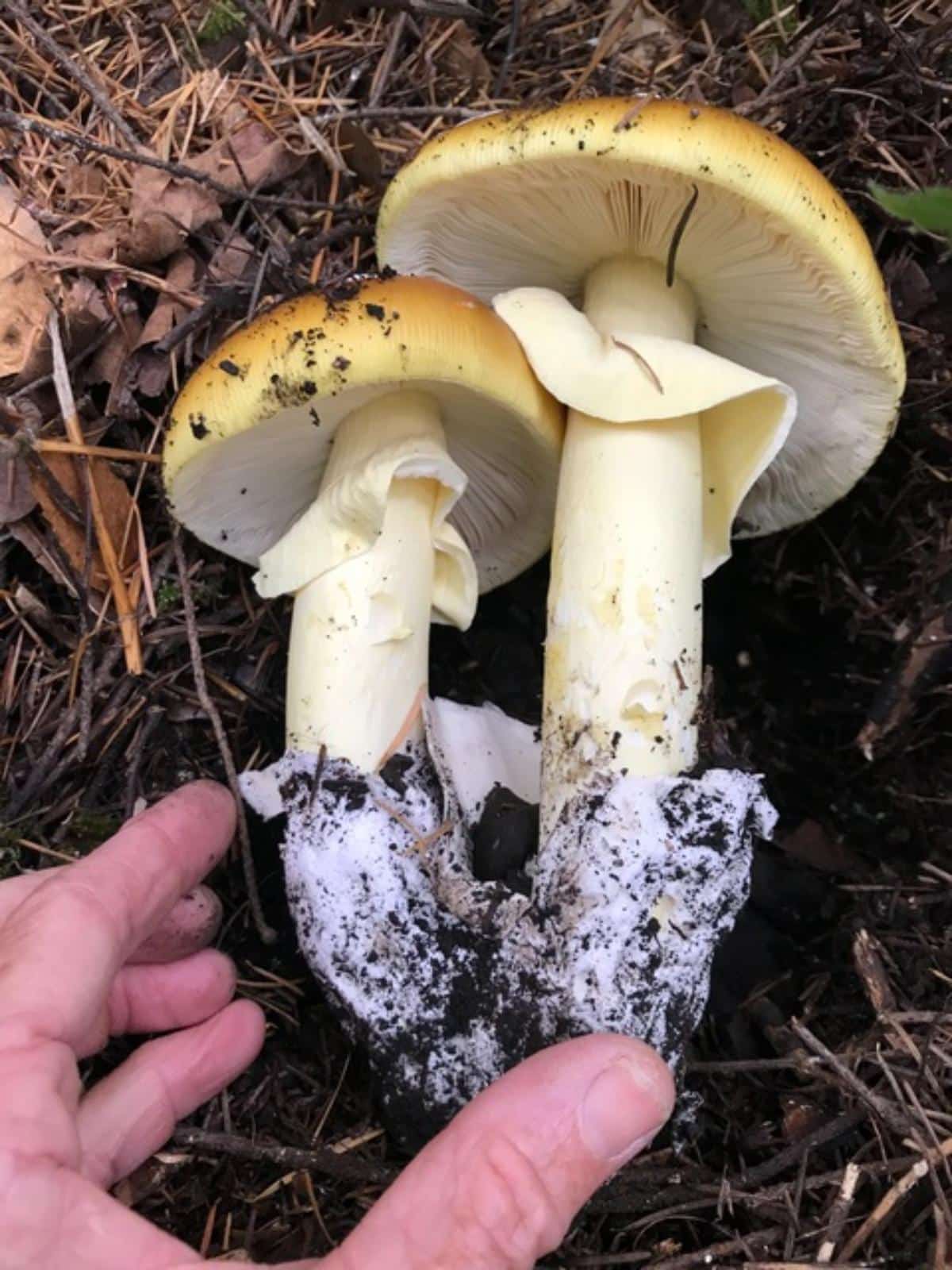
Common partial veil remnant patterns:
The partial veil leaves behind distinctive features that help identify the species after it breaks. The most common remnant is the annulus or ring on the stem. The mushroom might have a skirt-like ring hanging from the stem, known as a pendant ring. Some species have a more rigid, horizontal ring. Other species have a sheathing ring that looks like a floppy, upswept vase around the stem.
The partial veil sometimes leaves fragments hanging from the edge, creating what is called an appendiculate margin. Species with more delicate veils, especially in the Cortinarius genus, might only have tiny fibers left over, which get colored by fallen spores.
The veil remnants’ texture also offers valuable identification clues. A sturdy, membranous veil usually leaves a more substantial ring. Fragile, cortina-type veils might only leave subtle traces or colored fibers along the stem. Some partial veils become slimy and dissolve into a protective gelatinous layer as the mushroom grows.
Weather affects how visible these features stay, so check your specimens while they’re fresh if at all possible.


Veil Variations Across Mushroom Species
Amanita Species
Amanita mushrooms stand out because of their unique veil characteristics. Most of these mushrooms have both universal and partial veils. Young Amanita mushrooms develop inside a protective egg-like structure formed by the universal veil. A partial veil also forms around the gills and covers them when the mushroom is young.
Its universal veil forms a sack-like volva at the base. When the Amanita is young, the white universal veil covers it entirely. It looks like an egg stuck in the ground. When the universal veil breaks, it leaves a cup at the base of the stem. It also creates warts or patches on the cap, which are remnants of the universal veil.
The partial veil covers the gills when the mushroom is very young. When the partial veil breaks, it creates a prominent ring around the upper stem.


Cortinarius Species
Cortinarius mushrooms have delicate, cobweb-like partial veils called cortinas (this is where their scientific name comes from – cortina means “curtained.”). The cortina is so lightweight and fragile that once it breaks, it often disappears completely. When you find a Cortinarius mushroom in maturity, there are commonly no remnants of the partial veil leftover.
But, the mushroom does offer clues that a partial veil once existed. When the veil collapses, it often leaves a distinctive ring around the upper part of the stem. This ring may actually still have veil remnants in it, but more often than not, it is just a brown ring line like a water line on the stem.
Cortinarius species may also have partial veil remnants around the edge of cap. They don’t look like much and are easily overlooked, but they are a big part of identifying this species. The very thin cobwebby cortina fragments hang off the edges of the cap like little wispy fibers.



Agrocybe Species
Agrocybe mushrooms have thin, membranous partial veils that tear easily. In many cases they disappear entirely as the mushroom matures and there is no sign they existed at all. In other cases, small leftover fibers can be seen hanging from the edges of the cap. This species is an example of a mushroom with a partial veil that isn’t super distinctive and may not help with identification once it’s gone.

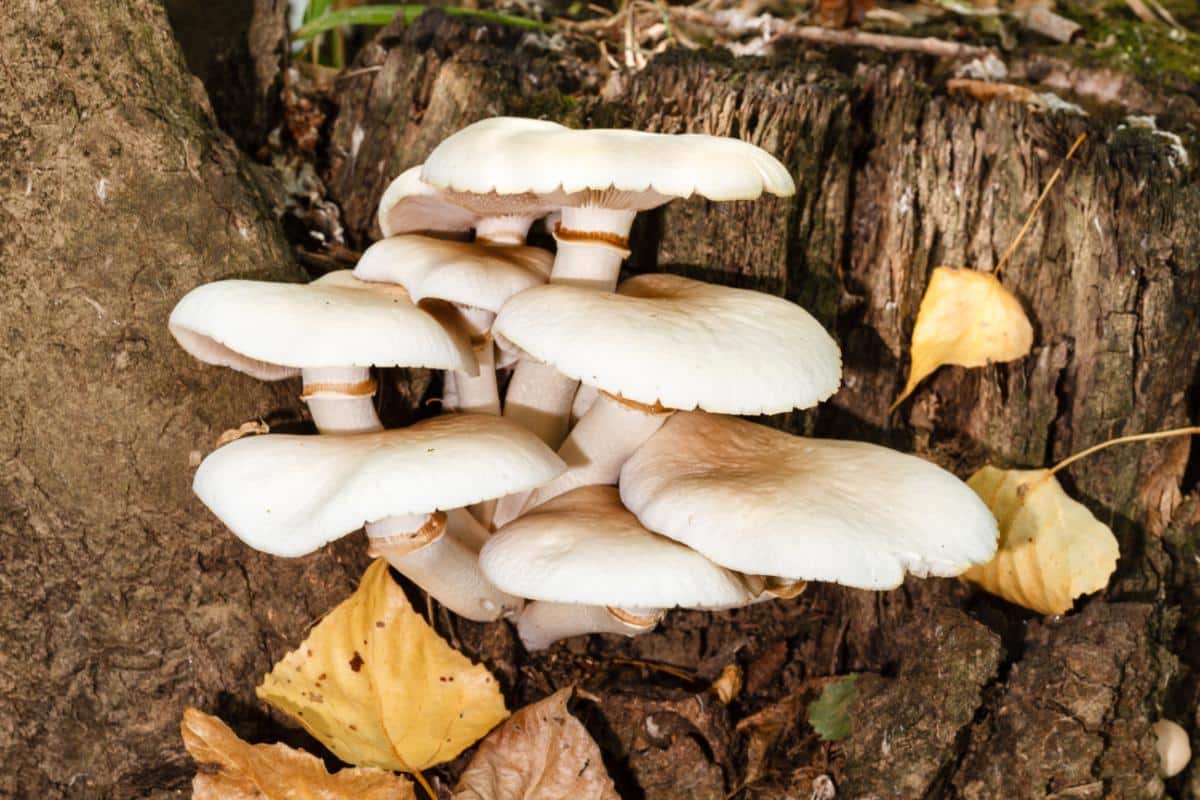
Armillaria Species
The honey mushroom is the most well known Armillaria species. These mushrooms have thick rings with distinct upper and lower parts. The rings are remnants of a thin yellow partial veil that covered the gills when the mushroom was young.
Not all honey mushrooms have rings around the stem. The ringless honey mushroom (name on point!) does not have a partial veil when young and therefore no ring around the stem later.


Agaricus Species
The common button mushroom, the one most widely sold in supermarkets, starts out with a partial veil covering the gills. You’ve probably seen it if you’ve ever prepared fresh button mushrooms. The partial veil is white and cottony and is usually removed before cooking.
As the mushroom grows, the veil breaks and leaves behind a white ring around the upper part of the stem. The portabello mushroom, which is just a grown-up button mushroom, has this ring around the stem.


Boletes
It’s not just gilled mushrooms that have veils. Several Bolete species, mostly in the Suillus family, sport partial veils. Boletes have pores instead of gills and in some cases, these pores are covered by partial veils. Just like with the gilled mushroom species, the partial veil is there to protect the spores as the mushroom develops.
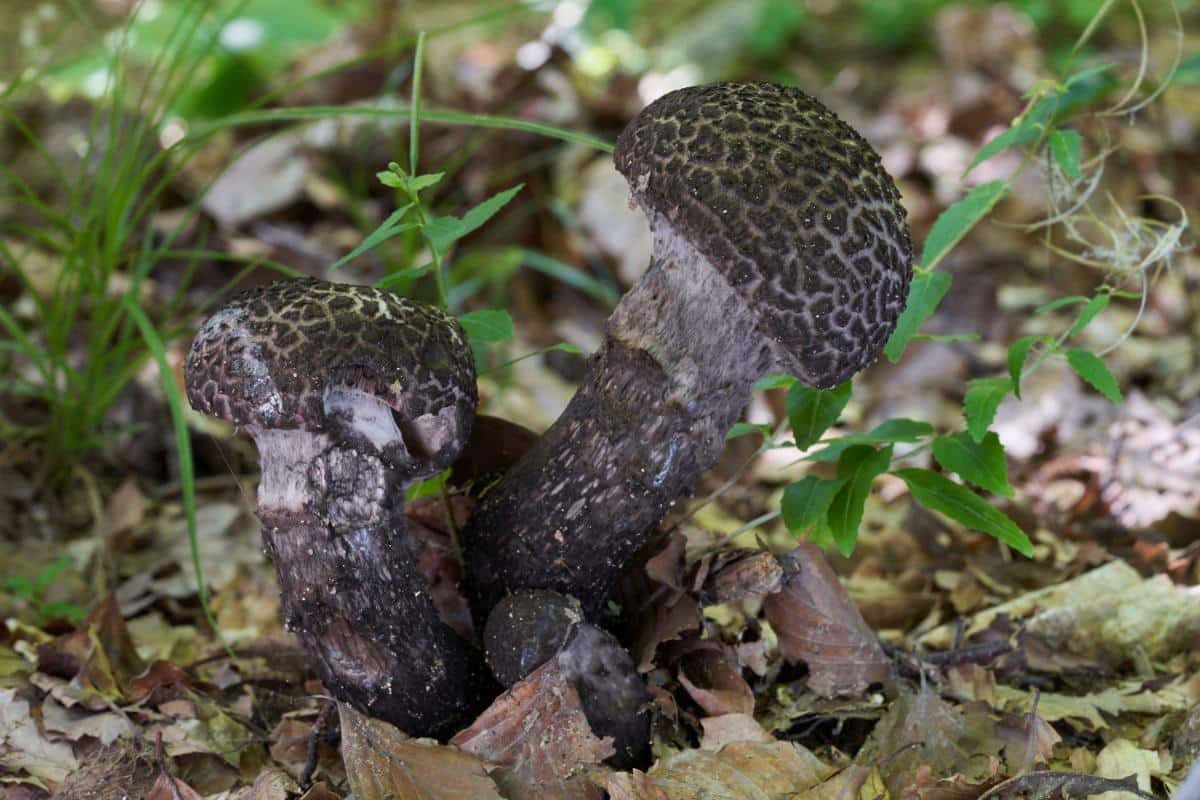
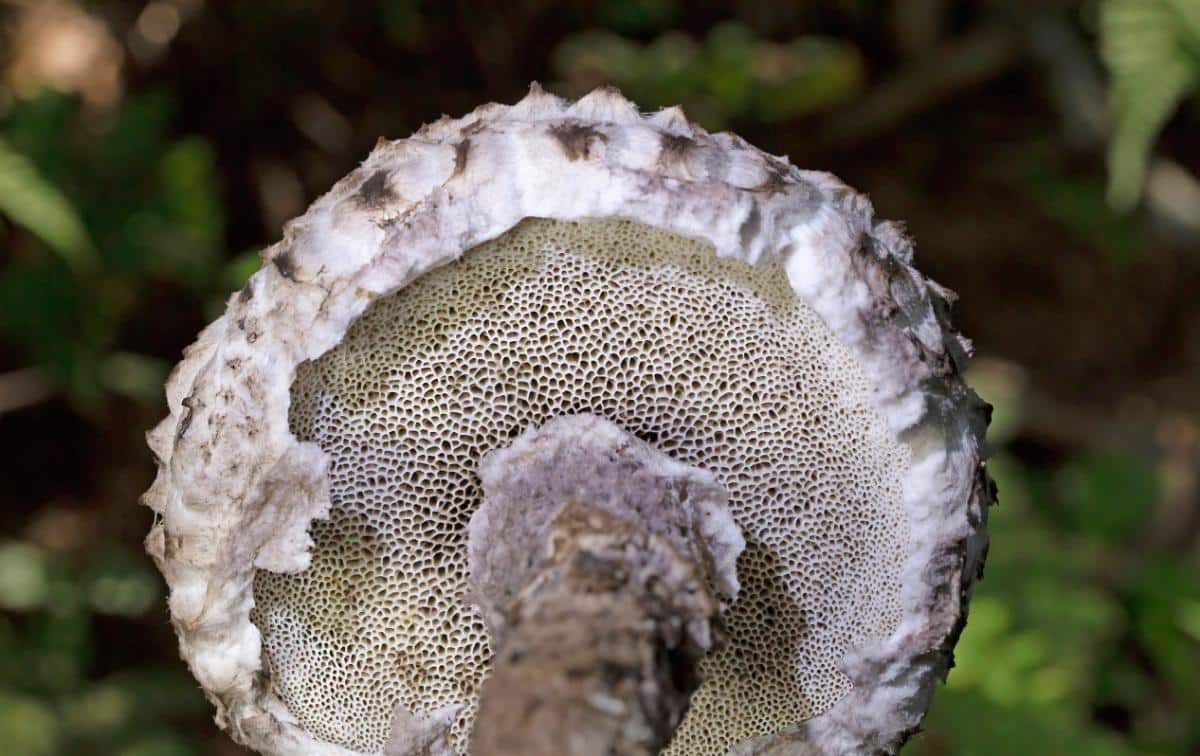

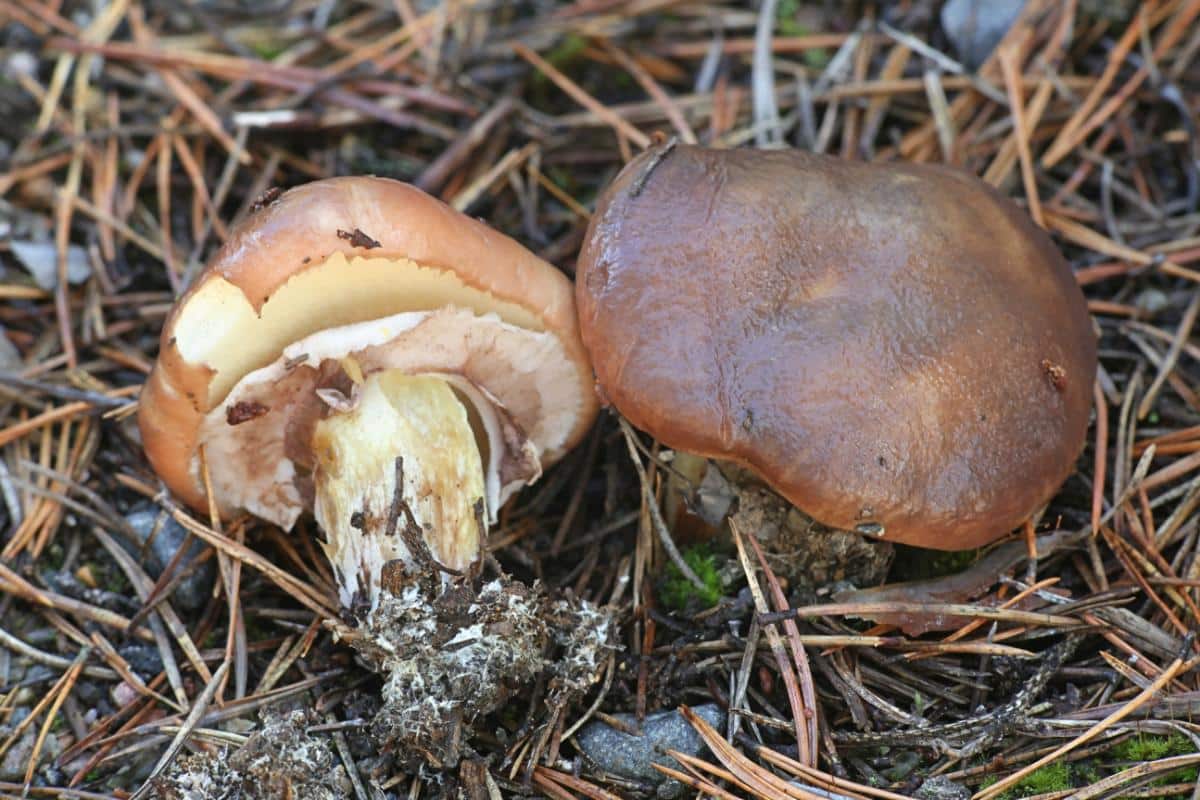

Common Questions About Partial Veils and Universal Veils
How do universal and partial veils differ in appearance?
Universal veil remnants often appear as patches or warts on the cap and as a cup-like volva at the base. Partial veil remnants typically form a ring (annulus) on the stem. Some mushrooms may have both, while others might have only one or neither.
Why are veils important for mushroom identification?
Veils are key features in mushroom taxonomy. Their presence, absence, and characteristics (like texture, color, and persistence) can help distinguish between different genera and species. Recognizing them is crucial for accurate identification.
Can veil characteristics change as the mushroom matures?
Yes! Veil remnants can wash away with rain, fade with sun exposure, or be eaten by insects. It’s best to observe mushrooms at various growth stages for accurate identification.
Are there any edible mushrooms with prominent veils?
Yes, some edible mushrooms like Agaricus bisporus (button mushrooms) have partial veils. Never consume wild mushrooms based solely on veil characteristics. Some very toxic mushrooms also have veils.









Leave a Reply